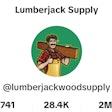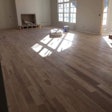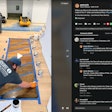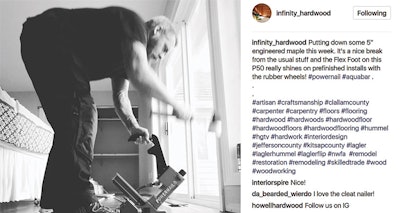
Today my Instagram has thousands of followers, but two years ago I had only 39. Back then I was a casual user, posting photos mainly to share things with friends. I wasn't thinking about using it for anything else until I saw a friend of mine was promoting her retail business with it. I saw the potential it could offer my own business, and I started to take it seriously.
I changed my Instagram username from my name to the name of my business (@infinity_hardwood). I put effort into cultivating a professional image and engaging with industry peers and local customers alike. My Instagram follower count started to tick up.
I often get asked by contractors what the secret formula is and what tricks they can use to build success with Instagram. My reply is there is no magic, no smoke and mirrors, just good old-fashioned effort and a bit of calculation. It has paid off. I now get leads directly from Instagram, and I can use my feed to persuade potential customers to pick my bid.
Looking back on my two-year run on Instagram, here's what worked for me.
Take the Time for Good Content
Unless you have a big posterior and your own reality show, you're going to have to work hard to build your business account. That means spending some time on the job site to get great content. That's not instinctual for contractors. I'm always in the mode of getting this job done and getting on to the next one, but I noticed my posts did better when I took the time to stop what I was doing, set up some kind of shot and write an informative caption.
Today I spend a few minutes to do this right, and I don't think of it as wasting time. I think about it like advertising. Instagram is free, but the tradeoff is that it costs time to do it well.
Getting Pro Content
When I started to build my business's Instagram, I stressed the word business. I wanted it professionally focused with just a side of personality. I don't post anything that could be deemed offensive or puts me in a bad light. Sometimes this is obvious. Doing burnouts in the McDonald's parking lot? Save it for the personal account. But it also means I tried not to take photos on the work site if it's a little messy.
RELATED: How a Floor Pro Increased Profits Using 'Olympic Pricing' Estimates
The pictures I take and post tell a positive story about the business. Looking at my account, I have photos from a few industry education events. Clients want to see that I'm getting trained and have relationships with the companies in my industry. I'll also use pictures of me and my peers at these events to show I'm committed to people in the industry.
Don't Worry About Professional Photos
I used to think a lot about the quality of the images I was posting, but I don't anymore. A professional Instagram account doesn't mean you need a fancy camera and professional photo training. I just try to show an interesting perspective, and I make sure the subject matter is in focus. Sometimes I will set the timer on my phone or have someone else take a shot so I can get some interesting pictures of me and my work. I don't get too crazy with Instagram's photo filters because I want to show the natural look of the floor. All I try to do is take a photo that tells a story—that I'm hardworking, skilled, educated, focused. You can do that without being a legit photographer.
Finding, Forging Community
Feeling more confident with the images I was sharing, I started to get out there and interact with other Instagram users. I began by following other professionals in the trade. Whenever I saw projects I liked, I'd like the post or leave a comment. Once people saw I was on Instagram and engaging, they started to like my page and my photos back. A majority of my initial likes and followers came from this community. A lot of the industry is active on Instagram and will follow each other. It seems people are followed by the same 800–1,000 people in the industry. That's a great base following to get. Although these followers weren't going to be my clients, I was grateful for any love that came back to me from these people. I also started looking into other similar communities, like interior design and real estate.
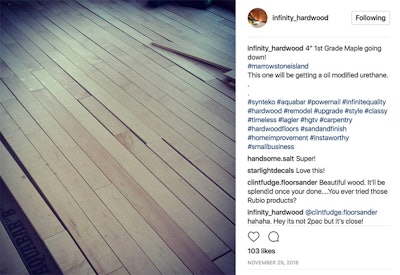
My follower count really began to accelerate when I started getting strategic with the hashtags on my posts. I think of tags in three different categories: broad tags that are very general in nature but are used the most and get a lot of exposure, like #construction, #remodel, #floors; specialized tags that put you into specific content, such as #hardwoodfloor, #solidoak, #lagler4life; and finally the narrowly focused geo-tags. This, I learned, is where the magic happens. Narrowly focused geo-tags are things like your county, cities you service and even neighborhoods within those cities. By using these tags, anyone searching those tags could see me.
Location, Location, Location
My Instagram effort really started to pay off when I started interacting with the people who might actually hire me. Just like how I use geo-tags on my posts, I began searching for photos with those tags. These were photos from people who lived in those areas. I would like and comment on their photos to ping them with a notification, and they'd come to my feed and see all the effort I spent building professional content and joining the community, plus they could click on links to my website, phone and email. That person might not need a new floor just yet, but they saw I was popular and in their area, so I stood a very good chance of getting word-of-mouth referrals from each of them.
My First Instagram Lead
My first lead from Instagram was a guy who called me directly from the "call" link in my Instagram profile. He said he had browsed through my feed, and it seemed to him I was one of the top guys working with high-end tools. He hired me for the job.
I've received six direct leads, like that guy, since I started focusing on hashtag strategy a year ago. These leads are basically non-competitive bids: They wanted to work with me specifically, and I didn't have to worry if my estimate would be price-shopped. My following is appealing to clients. They think, "If thousands of people like him, I'll like him, too."
My feed has helped me with my face-to-face clients, as well. For bid projects, I'll tell clients to look at my Instagram feed to see a gallery of my projects. Sure, I wanted them to get an idea of my work, but I also knew they'd see the photos of me visiting training centers and hanging out with my industry peers. They'd also see the number of followers I have. I have had quite a few clients who told me they were impressed and chose me even when I wasn't the lowest bidder—that's an accomplishment. A lot of guys in the industry feel they need to compete on price despite their high-quality, flawless work. My Instagram efforts have helped to convince my customers that I'm worth paying for. And I've grown more comfortable asking for a higher price, too.
Two Years Later: A Connected Community
It took two years to get to 5,000 followers, and I'm still working on it—there are industry guys on Instagram with higher follower counts than me. And while I'm thankful I can use my follower count to gain the trust of future clients, I didn't set out to get better at Instagram solely for my business' bottom line.
For me, it was also about joining the community of wood flooring Instagrammers, seeing their work, sharing mine, and learning from everyone. The incentive was there to do higher-quality work, because I could display it in front of a larger audience than I could have imagined 10 years ago. Instagram makes the world that much smaller, where I can be friends with people on the other side of the world, witness the quality of their work and show them some love for it.
RELATED: How Hiring Outside Experts Transformed Our Wood Flooring Business



























